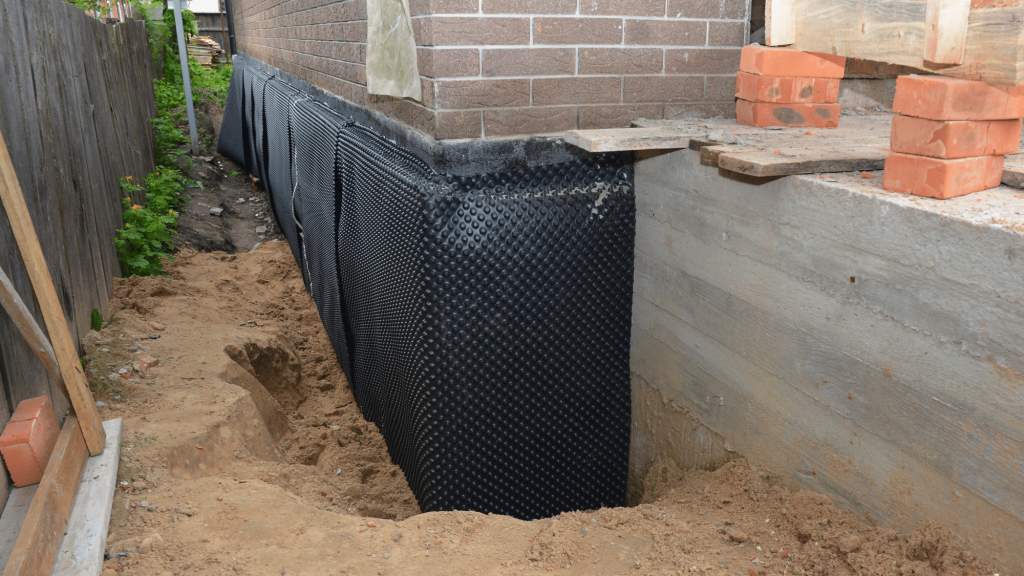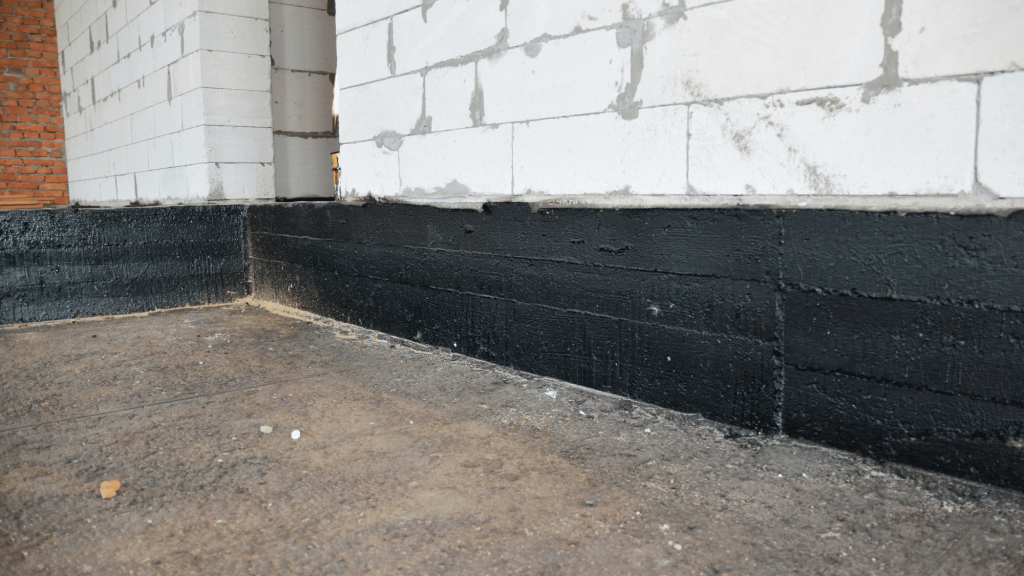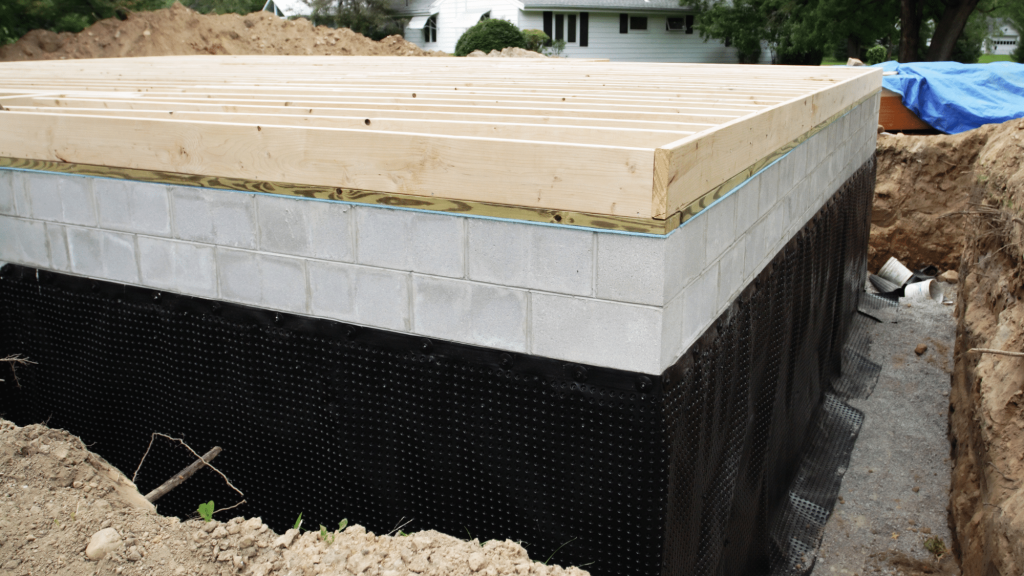Table of Contents
Dealing with a wet basement can really upset anyone. The worry about mold, damage to belongings, and that musty smell is constant. It’s enough to make anyone feel uneasy.
But you’re not alone. Nearly 60% of U.S. homes face dampness or water issues downstairs. Our search for solutions showed us how vital basement waterproofing is.
What are the Benefits of Basement Waterproofing? Let’s explore the top seven benefits. From protecting your home to increasing its value and ensuring a dry, healthy space. Or, it’s best to talk to pros like Array of Solutions for guidance.
Basement waterproofing isn’t just about avoiding disaster. It gives us peace of mind by preventing water damage and managing moisture. It also keeps mold away. Join us for an eye-opening look!


Key Takeaways
- Basement waterproofing makes more space for us to live and store things. It lets us use the basement without leaks.
- It stops water damage and mold. This keeps our homes strong and our air clean.
- Waterproofing raises our home’s value. Buyers like dry, safe basements.
- We have many ways to keep basements dry, both inside and outside methods.
- Before starting, check for water harm and think about cost. Pick what works best for your house.
Top 7 Benefits of Basement Waterproofing
Top 7 Benefits of Basement Waterproofing: Basement waterproofing offers many advantages for homeowners. It helps keep our spaces dry and safe from water damage.Increased living space
Basement waterproofing gives us more living space. A dry basement can become a playroom, office, or extra bedroom. We can use this area for family activities or storage without worrying about leaks. With proper moisture control, we reduce the risk of mold and dampness. This makes our new space healthier and safer. Adding waterproof coatings keeps it clean and usable for years to come.Prevention of water damage
Water damage can cause big problems for our homes. It leads to mold growth and weakens structures. By investing in basement waterproofing, we significantly reduce these risks. This process helps keep moisture out of our basements. We protect our homes from costly repairs caused by leaks. Dry spaces improve air quality too. Dampness often brings musty smells and allergens. With proper basement humidity control, we prevent these issues and create a healthier living environment. Our families deserve clean air and safe spaces!Improved indoor air quality
A dry basement leads to better air quality in our homes. Moisture can cause mold and mildew. These harmful substances can make us sick. With basement waterproofing, we reduce the chance of these problems. Good indoor air helps everyone breathe easier. Products used for basement waterproofing also cut down on allergens. This means healthier spaces for us and our families or customers. We gain peace of mind knowing that our indoor environment is safe and clean.Increased property value
Basement waterproofing boosts our property value. Buyers prefer homes that are dry and safe. They worry less about water damage and mold prevention when they see a well-waterproofed basement. We also enjoy higher resale prices by investing in waterproofing solutions. A good foundation helps keep our home strong. Taking care of the basement shows we maintain our property well, making it more appealing to buyers.Structural protection
Keeping our homes and buildings safe is key. Waterproofing stops water from reaching the foundation. This prevents serious damage over time. A dry basement keeps our property strong. It stops cracks and leaks that could weaken walls or floors. Basement waterproof coatings protect against water. They also lower risks of mold and wood rot. Sump pump installation quickly removes excess water. These steps protect our investments and keep us safe inside.Types of Basement Waterproofing to Consider
We have many ways to waterproof our basements. Each method has its own benefits and costs. We must choose based on our needs.Interior waterproofing methods
Interior methods keep our basements dry and safe. We can use several effective techniques for this purpose.- Sealants: These products fill gaps and cracks in walls. They create a barrier against water. Applying sealants helps prevent basement moisture control.
- Sump Pumps: These pumps remove excess water from the basement. They collect water and pump it outside, stopping water damage in its tracks.
- Drainage Systems: Installing interior drainage helps redirect water away from walls. This system collects moisture and sends it to the sump pump.
- Waterproofing Membranes: These sheets are applied to walls and floors. They block water from seeping in and protect against dampness prevention.
- Dehumidifiers: Using a dehumidifier lowers humidity levels in our basement. It removes moisture from the air, helping us fight mold growth.
- Crawl Space Encapsulation: For homes with crawl spaces, this method seals off the area with plastic sheeting. This keeps out moisture, protecting structural integrity.
- Foundation Coatings: Special coatings can be applied to foundation walls to provide extra protection against water intrusion.

Exterior waterproofing methods
Exterior waterproofing keeps water out of our basements. It protects our homes from damage.- Grading The ground near our foundation should slope away. This helps rainwater run off and not pool around the basement.
- French Drains A French drain system collects water outside our home. It directs water away from the foundation, reducing the chance of basement moisture.
- Waterproof Coating We can apply a waterproof coating to the exterior walls. This barrier prevents moisture from seeping through and keeps our basement dry.
- Drainage Pipes Installing drainage pipes around the foundation is a good choice. These pipes move water away from our house, which helps with basement seepage prevention.
- Foundation Waterproof Membrane A membrane on the foundation walls acts as another defense against dampness. It adds an extra layer of protection that stops water intrusion.
- Sump Pump Installation Using a sump pump can help remove any water that collects in the basement area. We can install this inside or outside for quick water removal.
- Sealing Cracks Sealing any visible cracks in the foundation is vital for moisture resistance. This simple step helps us maintain structural integrity and keep out harmful mold.
Damp proofing
Damp proofing helps keep our basements dry. It creates a barrier against moisture. This method is useful for stopping water from entering walls and floors. We can use special coatings or membranes to block dampness. By preventing basement moisture, we protect our homes from mold growth and damage. Damp proofing saves us money on repairs in the long run. It also adds value to our property by keeping it safe and sound. Investing in basement dampness protection is a smart move for homeowners and business owners alike.What to Consider Before Waterproofing Your Basement
Before we waterproof our basement, we should check for signs of water damage. We also need to think about the cost and budget before choosing the right method for our home.Identifying signs of water damage
Identifying signs of water damage is key for homeowners and business owners. Catching these issues early can save money and protect our property. Here are some common signs to look for:- Wet Spots on Walls: We may see discolored patches on our walls. These spots often signal moisture behind the surface.
- Mold and Mildew Growth: If we notice a musty smell or dark spots, mold might be present. This can harm indoor air quality and lead to health issues.
- Damp Carpets or Flooring: Feeling wet carpets under our feet is a clear sign of water problems. It indicates that moisture may be rising from the basement.
- Peeling Paint or Wallpaper: We should watch for bubbling, peeling, or cracking paint or wallpaper. This usually happens due to trapped moisture in the wall.
- Cracks in the Foundation: Small cracks can turn into big problems over time. We must check our foundation regularly for any new or growing cracks.
- Puddles on Basement Floors: Finding pools of water on the floor points to drainage issues. This can lead to serious basement water damage if not addressed quickly.
- Increased Utility Bills: A sudden spike in water bills may indicate leaks somewhere in the home. We need to monitor our usage to catch hidden problems early.
Cost and budget
For homeowners and business owners, cost and budget are key. We must plan before starting basement waterproofing. The cost varies with the methods chosen. Interior methods might be cheaper than exterior options. Our budget for future projects, like basement remodeling, is also important. The right waterproofing method protects against water damage without overspending. Looking at different waterproofing products’ prices is wise. Getting quotes from various contractors helps find a solution that fits our budget and protects our home from water. Hiring pros like Array of Solutions offers quick help and extended warranties. They ensure the job is done right, giving us peace of mind.Choosing the right waterproofing method for your home
Choosing the right waterproofing method is essential. We need to protect our basement from water damage and mold.- Interior Waterproofing This method blocks moisture inside the basement. Sealants on walls and floors, along with sump pumps, manage minor leaks.
- Exterior Waterproofing This approach stops water from reaching our foundation. It involves digging and installing drainage systems to guide water away. It’s best for serious issues.
- Damp Proofing Damp proofing creates a barrier against moisture. It’s cheaper but doesn’t stop standing water. It might be enough in dry areas.
- Foundation Drainage Systems These systems direct water away from basement walls. They include French drains or trench drains. They keep our basement dry during heavy rains.
- Consult Waterproofing Contractors Professional contractors assess our situation better than we can. They recommend the best methods based on our needs. Choosing experts with good reviews is important.
- Assess Our Budget The cost varies by method and work needed. Interior methods are often cheaper due to less digging. Knowing our budget helps narrow down options.
- Identify Signs of Water Damage Before choosing a method, check for existing damage. Look for damp spots, mold, or peeling paint. Fixing these issues early prevents bigger repairs later.
Conclusion
We’ve learned a lot about basement waterproofing. It offers many benefits. We gain extra living space and protect our homes from water damage. Indoor air quality improves, making our homes healthier. This process can also raise the value of our property. These steps are practical and easy. Have we checked for signs of water damage in our basements? Let’s consider different waterproofing methods that suit our needs. Understanding this topic is important for protecting our investment. If we want to know more, several resources are available online. Let’s take charge of our home’s safety today! Together, we can make sure our basements stay dry and strong.

